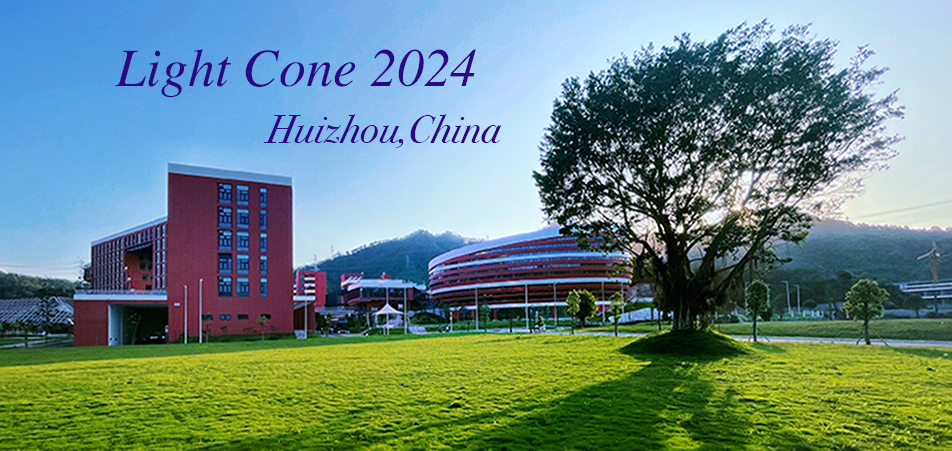In the instant-time formulation of quantum field theory, solitons correspond to states. We present a new formalism for treating these states. The formalism is much simpler and easier to use than previous formalisms, making many previously impractical problems now practical. We have used it to calculate soliton masses, spectra, form factors, and scattering amplitudes, as well as the decay...
The off-shell pion electromagnetic form factors are explored
using phenomenological relativistic constituent quark models. These composite pion models feature
massive, structureless blue quark and antiquark, allowing the computation of microscopic form factors
via the Mandelstam approach. Each model relies on two parameters which are determined by closely reproducing the pion decay...
We apply the joint threshold and transverse momentum dependent (TMD)
factorization theorem to introduce new threshold-TMD distribution functions, including threshold-TMD parton distribution functions (PDFs) and fragmentation functions (FFs). We apply Soft-Collinear Effective Theory and renormalization group methods to perform QCD evolution for both threshold-TMD PDFs and FFs. We show the...
Nuclear dependence of Single Transverse Spin Asymmetry (STSA) in $p^↑ p$ and $p^↑ A$ collisions is still a standing mystery. Recent results by PHENIX ($A^{-1/3}$) [1] and STAR ($A^0$) [2] collaborations posses strikingly different nuclear scaling which suggest that the dominant underlying mechanism for STSA may vary with the kinematics of the collision. In the forward regime, where the gluon...
The most challenging aspect of Quantum Chromodynamics (QCD) is perhaps the complexity of calculations required to obtain precise results. For example, ab initio Lattice QCD calculations demand expensive computations on large supercomputers. Yet, existing machines are still not sufficiently powerful to fully address many interesting problems such as structure functions of hadrons, or...
Using a non-perturbative light-front Hamiltonian approach, we investigate the scattering and gluon emission of dressed quark states inside a SU(3) colored background field. We consider the scenario in deep inelastic scattering and in heavy ion collisions, where the quark originates from far outside the background field and is described by the light-front wavefunction of the QCD eigenstate in...
In this talk, I will present our calculation of kinematic power corrections $t/Q^2$ and $m^2/Q^2$ to the amplitude of deeply-virtual Compton scattering to the twist-six accuracy on a nucleon target.
Phenomenologically, this result reduces an important source of uncertainties in the QCD predictions for intermediate momentum transfers $Q^2 \sim 1 - 10 ~{\rm GeV}^2$, accessible in the existing...
The non-diagonal hard exclusive reactions admitting a description in terms of generalized parton distributions (GPDs) with transition $N\to\Delta, N^*$ provide insight into the internal dynamics of hadron excitations. A unified description of these reactions in the complete resonance region can be performed by introducing the concept of $N \to N \pi$ transition GPDs.
In this study, we...
The transport properties of dense nucleon matter at low temperatures are important but have rarely been studied in nuclear physics and astrophysics. In this work, we present a primary study of both bulk and shear viscosities of dense nucleon matter within the framework of the Boltzmann equation. To describe the static properties of nucleon matter, we apply the Walecka model in the mean-field...
Transition GPDs describe matrix elements of nonlocal partonic QCD operators between ground and excited baryon states and provide new tools for quantifying and interpreting the structure of baryon resonances in QCD.
We consider a description of non-diagonal Deeply Virtual Compton Scattering process involving a transition between anucleon and a nucleon resonance in the pion-nucleon system...
The hadronic energy-momentum tensor encodes the energy and stress distributions within hadrons. In this talk, I will report our recent advancements on the computation of gravitational form factor D(Q^2) in holographic QCD. Our method exploits the remarkable correspondence between semi-classical light-front QCD and semi-classical field theories in wrapped spacetime in 5D. The use of light-front...

